Since Escapade has been on the water (two years now), most of our time has been spent at marinas like Fox’s. While staying at a marina, we are tied up alongside a pontoon and have electric hook up and access to water to fill our tanks. However, when we eventually set off, we are hoping to spend as much time as possible away from marinas and be at anchor. Once in the Caribbean and, then more so in the Pacific, this could be for days or even weeks. So, we need to consider ways to become more self sufficient, especially for power and water.
We have already started preparing for this.
In September 2019, we bought a Schenker Smart 60 watermaker (see post 03/01/2020 ‘More learning’ when we collected it from Mactra Marine in Weston-super-Mare). We have delayed fitting it, as we cannot use it in marinas: we need much cleaner water.
Now was the time to fit it, but where?
As with anything in a boat, stowage needs to be considered very carefully. The watermaker is quite large and fairly heavy, so needs to be securely fixed. It is also needs hoses (for sea water to come in and desalinated water to go into the tanks), filters and a pump. All of these things need homes too.
After checking out our available spaces, we decided to fit the watermaker below the seating in the salon and the pump under the sole boards (floor panels). There are already plenty of other things in both of those places- 2 bilge pumps, a freshwater water pump and the hot water tank – but we measured carefully and decided everything would fit.
Martin designed and made special brackets for the watermaker to be bolted to, fixed the pump in place and sorted all of the hoses. It was a snug fit, but everything went in.
We now just need clean water to test it works. When working, this should give us 60 litres an hour – enough to keep us going when at anchor.
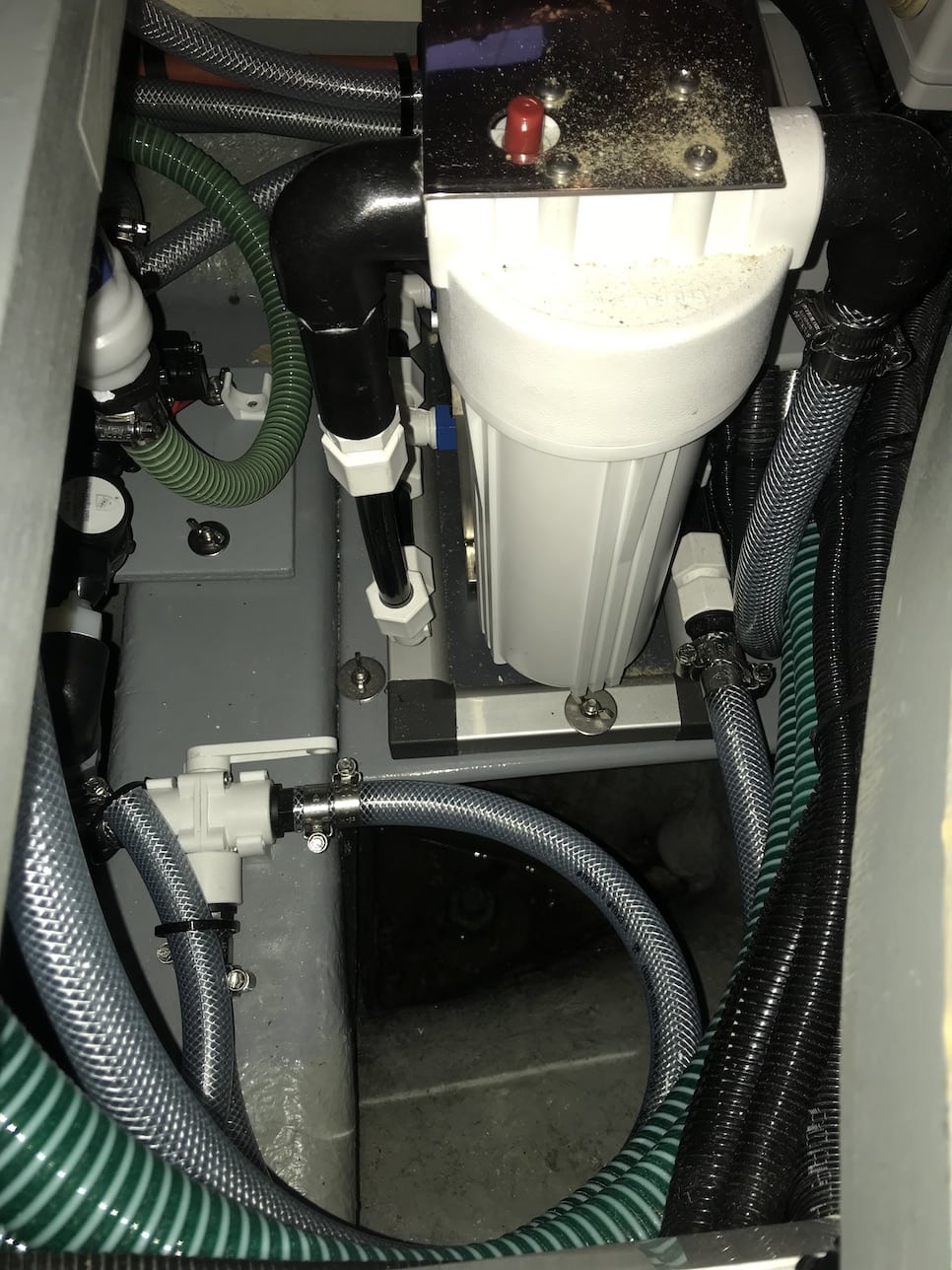
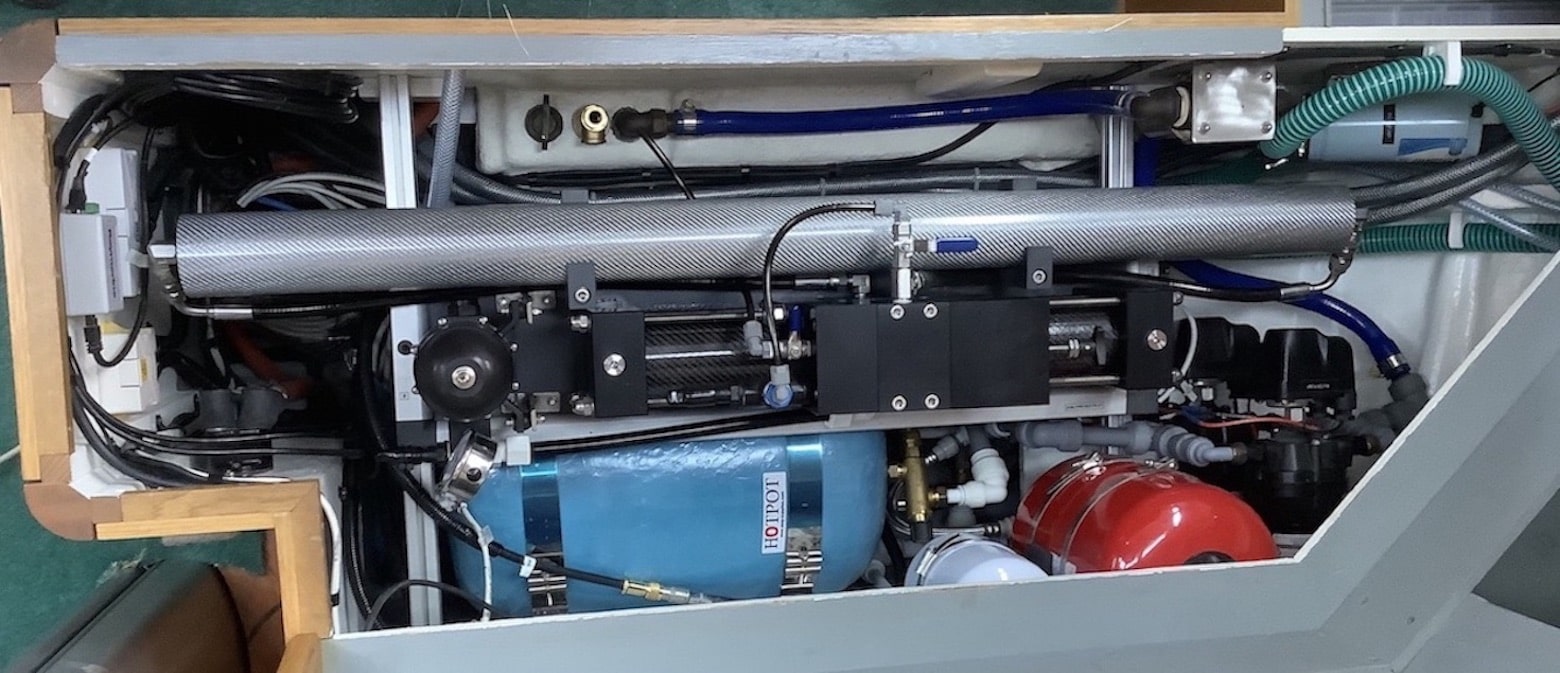
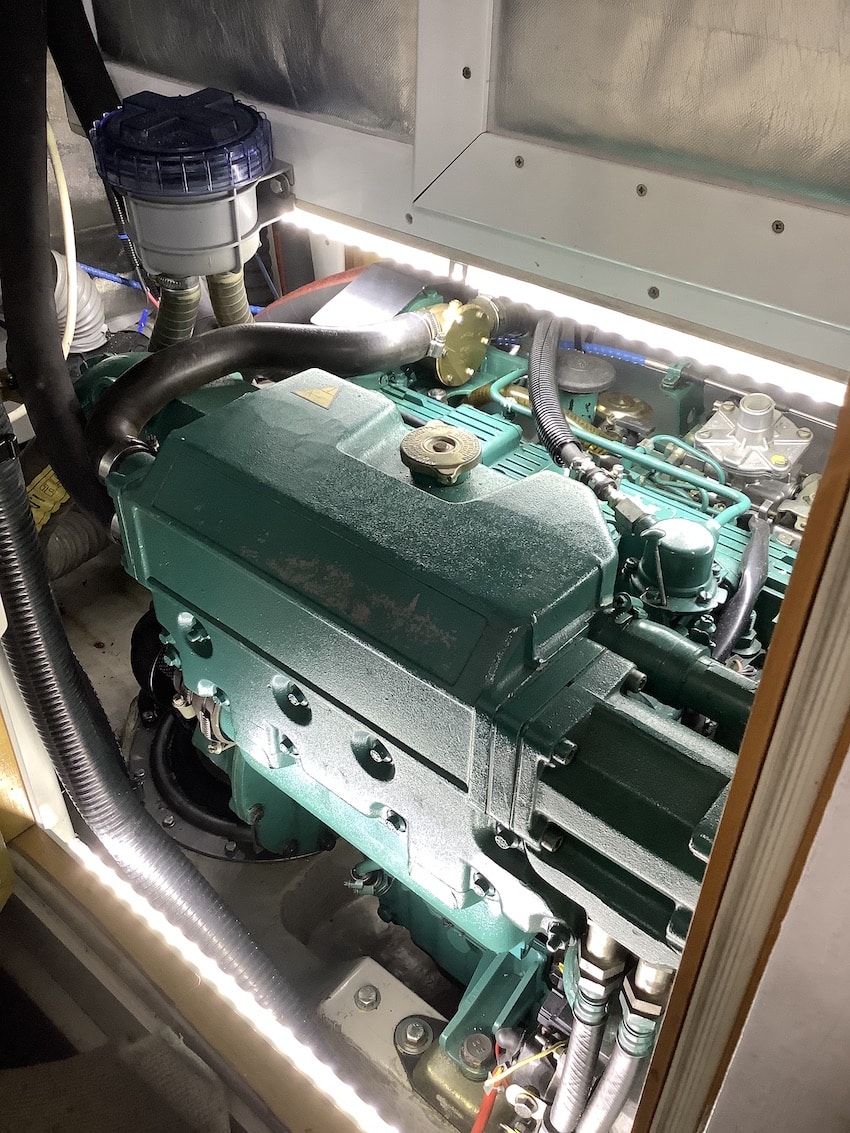
The other thing we need to consider is how to generate power when we can’t plug in to shore power at a marina.
We have 8 batteries on board. These are like car batteries and store power for us to use, but they need to be topped up regularly. They can be topped up in several ways. We can use the engine or the generator (when they are running) and also use our solar panels.
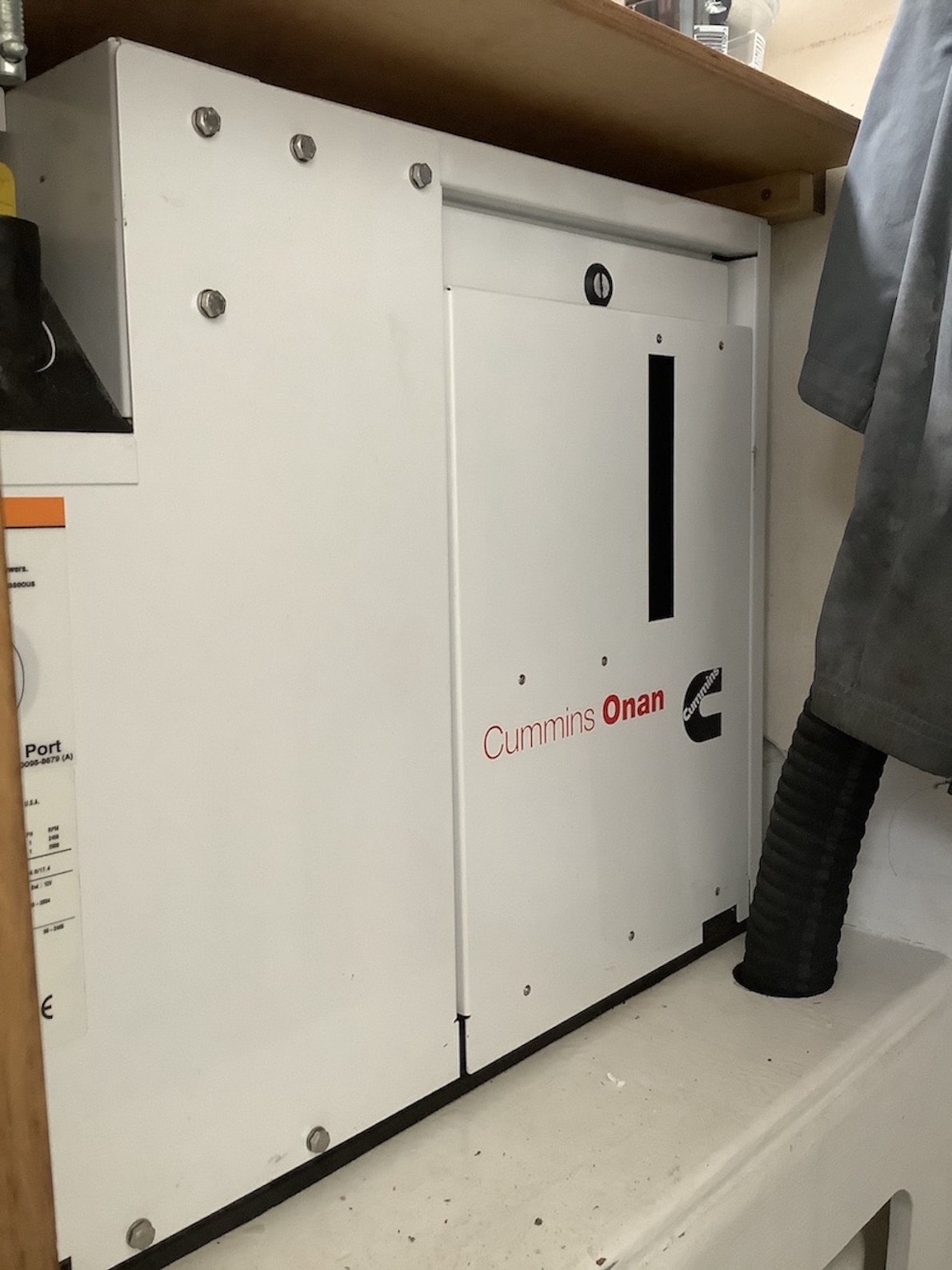
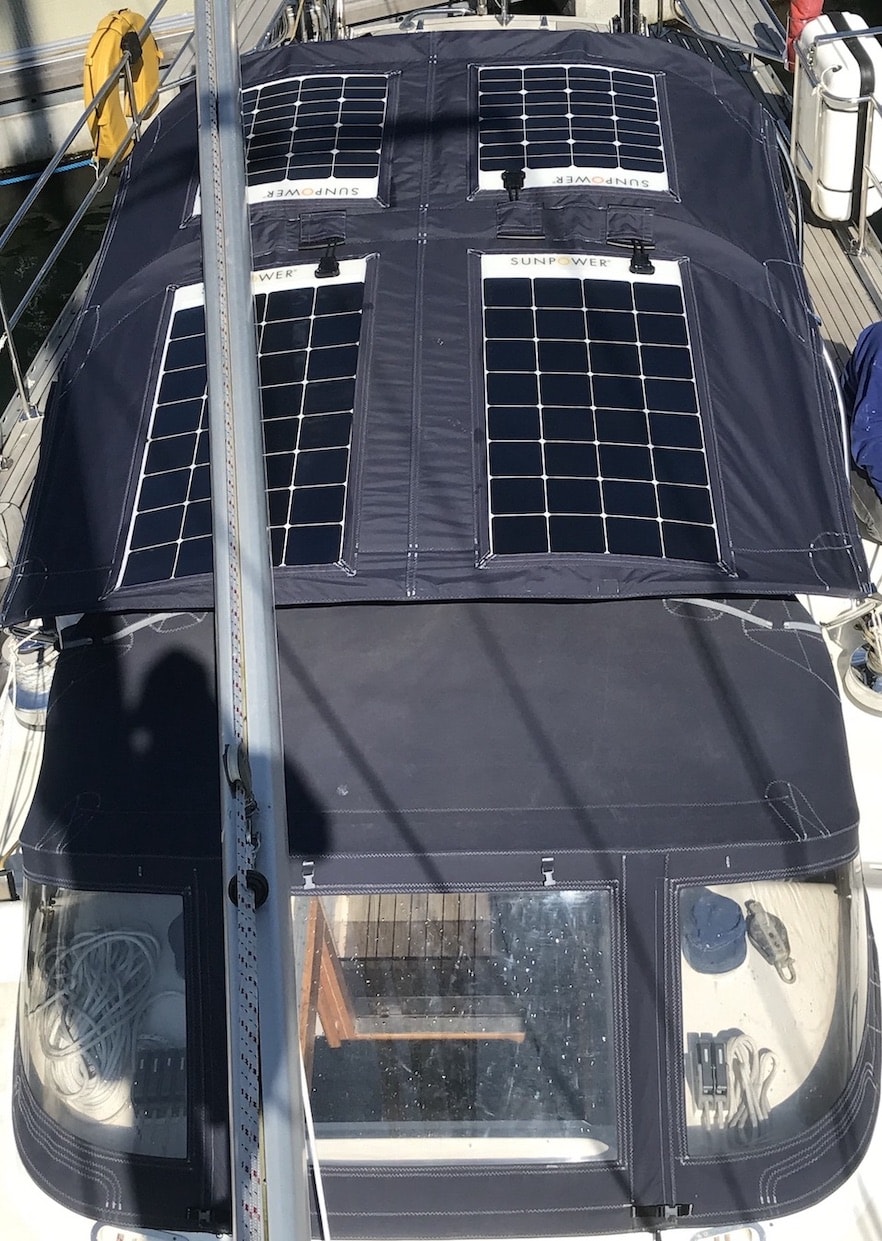
Those of you following us for a while will know that we have fitted four semi flexible panels to the Bimini (see ‘Solar panels’ on 27/04/2020). We have now also fitted two rigid 100W panels on top of our davits. These have been fitted on a frame designed by Martin and made by the stainless team at Fox’s. They provide a solid base for our panels, but also can be removed in stormy weather and tilted up when we need to get on and off the back of the boat.
We now have a total of 520 Watts of solar onboard and hope that, once in sunnier climes, this will be enough to run some of our electrics and trickle feed the batteries.
NB: 520W may sound a lot, but when you consider that an electric kettle could draw 3000W, we still have to be careful. So, no additional unnecessary electrical items – good job I gave up hair dryers and straighteners years ago!!
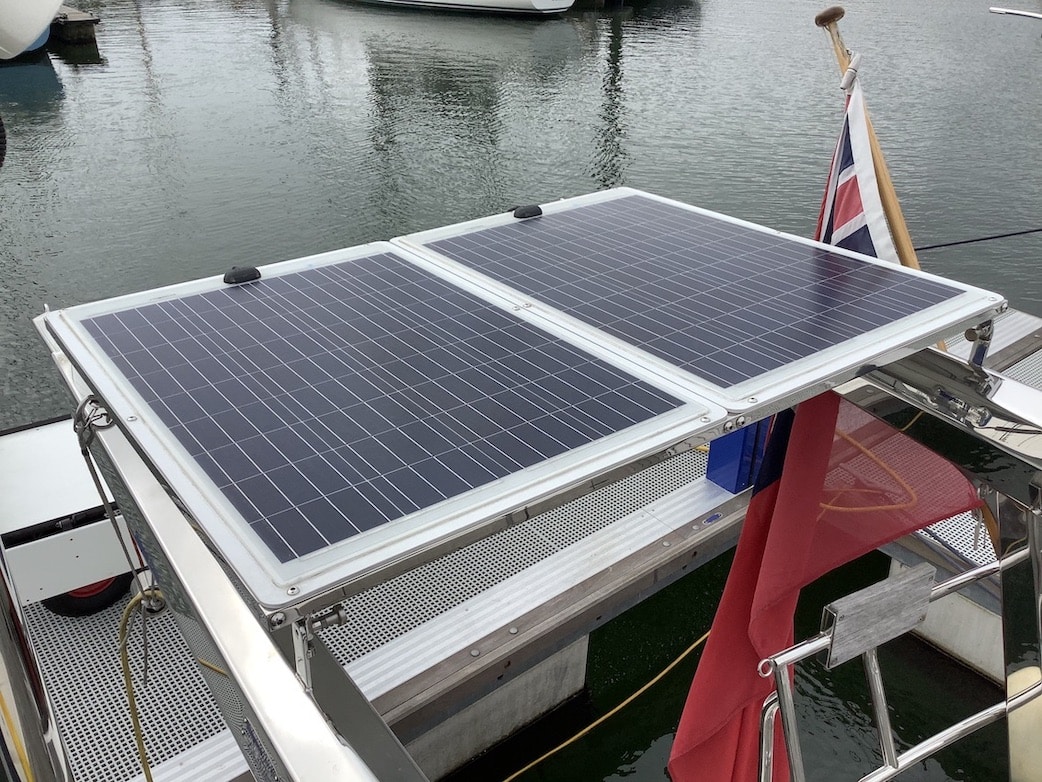
Roll on the Caribbean. You sound like you guys have most things covered. Can I suggest a fishing rod???
Hi,
We have made the most of the extra preparation time! Spoken to lots of other people and done plenty of research.
Fishing rod is on the shopping list !!
X C